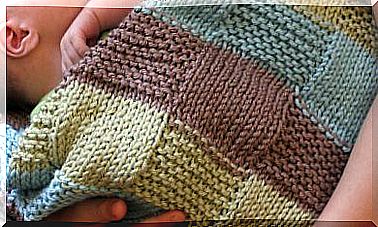Gene Silencing: Does Breast Milk Contribute?

Recently described, gene silencing is a sophisticated mechanism of control of tissue functions. The discovery of a huge repertoire of silencing molecules in human milk has marked a milestone in the physiology of lactation. Thus, the perception of milk has changed from being a ‘simple food’ to a highly sophisticated maternal-neonatal communication system.
In this article we will explore how the silencing molecules present in breast milk orchestrate the baby’s early genetic programming.
What is the mechanism of gene silencing like?
To explain this process, it is necessary to remember that DNA and RNA are two types of nucleic acids. Each type corresponds to long molecules in which smaller molecules known as ‘bases’ are concatenated. Depending on the specific sequence of bases, two strands of nucleic acids can be recognized and coupled to form a double strand.
On the one hand, the DNA base sequences make up an ‘original template’ of the gene sequence. On the other, that information from each gene is copied into a messenger RNA (mRNA). This transmission of the code from DNA to mRNA is the first step in making proteins.
Gene silencing is achieved by blocking or interfering with mRNA. This constitutes an innate process that results in the destruction of the copy of the gene that the mRNA carries.

How does the process happen?
During silencing, small interfering RNA (RNAi) sequences are coupled to mRNA, and this mRNA-RNAi pair is detected and destroyed. It should be noted that the mRNA-RNAi coupling requires that both be complementary, which makes the process gene-specific. To date, a repertoire of 1080 different silencing molecules has been reported in humans, of which almost 400 have been detected in breast milk.
What is the role of gene silencing during breastfeeding?
At first, when silencing was revealed, it was considered a defense mechanism called for silencing harmful mRNAs, such as viruses. However, today it is known that it has the potential to regulate very complex processes.
In infants, the regulation of the immune response and the regulation of cell differentiation (or maturation) stand out. Undoubtedly, both functions are extremely important for the development of the infant.
How do these silencing molecules travel in breast milk?
RNAi from milk travel within tiny lipid capsules that have been called ‘exosomes’ and within globules of milk fat. These exosomes sprout from the epithelial cells of the mammary gland.

Thanks to this special packaging, exosomes integrate very easily into intestinal cells. There, they can reach two destinations: the first, to regulate the function of the intestinal cell itself, the second, to pass through the intestine and reach the bloodstream to act on a target tissue.
Other information you might like to know about silencing molecules
- Virtually all living cells synthesize and secrete exosomes, each with its own RNAi content, which regulates gene expression and metabolism.
- This exosome-mediated mechanism can act on neighboring cells in the same tissue or on distant cells, traveling through the blood.
- RNAi are estimated to regulate the expression and metabolism of approximately 60% of human genes.
- Scientists have determined that inappropriate production of specific RNAi is associated with the development of various diseases.
- Infant formula is deficient in exosomal RNAi.
- A wide variety of organisms, including animals, plants, and fungi, produce and secrete RNAi-laden exosomes.
- Knowledge of how RNAi work is being applied experimentally to block genes for research and therapeutic purposes.










